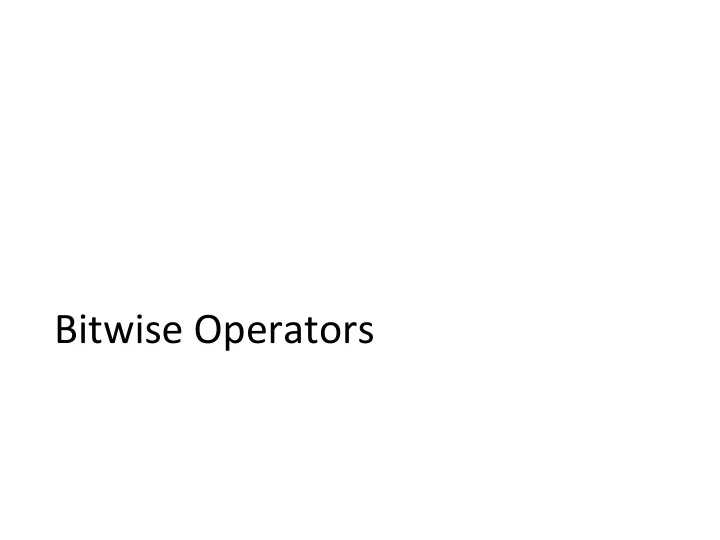

Bitwise Operators
Number Representation Recap Humans think about numbers in decimal Computers think about numbers in binary Base conversion to go between • Hex is more human-readable than binary All information on a computer is in binary • Nice because big difference between “high” and “low” Binary encoding can represent anything ! • Program needs to know how to interpret bits
Operators Recap • NOT: ~ • This will flip all bits in the operand • AND: & • This will perform a bitwise AND on every pair of bits • OR: | • This will perform a bitwise OR on every pair of bits • XOR: ^ • This will perform a bitwise XOR on every pair of bits • SHIFT: <<, >> • This will shift the bits right or left • logical vs. arithmetic
Operators Recap • NOT: ! • Evaluates the entire operand, rather than each bit • Produces a 1 if == 0, produces 0 if nonzero • AND: && • Produces 1 if both operands are nonzero • OR: || • Produces 1 if either operand is nonzero
Lab 1 • Worksheet in class • Tips: • Work on 8-bit versions first, then scale your solution to work with 32-bit inputs • Save intermediate results in variables for clarity • Shifting by more than 31 bits is UNDEFINED . This will NOT yield 0
Examples Create 0xFFFFFFFF using only one operator • Limited to constants from 0x00 to 0xFF • Naïve approach: 0xFF + (0xFF << 8) + (0xFF << 16) … • Better approach: ~0x00 = 0xFFFFFFFF
Examples Replace the leftmost byte of a 32-bit integer with 0xAB • Let our integer be x • First, we want to create a mask for the lower 24 bits • ~(0xFF << 24) will do that using just two operators • (x & mask) will zero out the leftmost 8 bits • Now, we want to OR in 0xAB to those zeroed-out bits • Final result: • (x & mask) | (0xAB << 24) • Total operators: 5
Recommend
More recommend